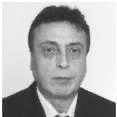International Journal of Intelligent Systems and Applications (IJISA)
IJISA Vol. 6, No. 9, 8 Aug. 2014
Cover page and Table of Contents: PDF (size: 436KB)
Auditory Model Identification Using REVCOR Method
Full Text (PDF, 436KB), PP.12-28
Views: 0 Downloads: 0
Author(s)
Index Terms
Auditory Filter, Gammashirp, SNR, MQE, Revcor, Channel Stimulation
Abstract
Auditory models are very useful in many applications such as speech coding and compression, cochlea prosthesis, and audio watermarking. In this paper we will develop a new auditory model based on the REVCOR method. This technique is based on the estimation of the impulse response of a suitable filter characterizing the auditory neuron and the cochlea. The first step of our study is focused on the development of a mathematical model based on the gammachirp system. This model is then programmed, implemented and simulated under Matlab. The obtained results are compared with the experimental values (REVCOR experiments) for the validation and a better optimization of the model parameters. Two objective criteria are used in order to optimize the audio model estimation which are the SNR (signal to noise ratio) and the MQE (mean quadratic error). The simulation results demonstrated that for the auditory model, only a reduced number of channels are excited (from 3 to 6). This result is very interesting for auditory implants because only significant channels will be stimulated. Besides, this simplifies the electronic implementation and medical intervention.
Cite This Paper
Lamia Bouafif, Noureddine Ellouze, "Auditory Model Identification Using REVCOR Method", International Journal of Intelligent Systems and Applications(IJISA), vol.6, no.9, pp.12-18, 2014. DOI:10.5815/ijisa.2014.09.02
Reference
[1]M. Slaney Auditory, Auditory Toolbox, Technical Report 1998.
[2]M. J. Hewitt & R. Meddis: Implementation details of model computation of innerhair-cell for auditory-nerve synapse, journal of Acoustical Society of America, vol.87, no.4, p. 1813-1816, April 1990.
[3]M. Slaney: Lyons Cochlear Model, Apple Computer Technical report 13, 1988.
[4]S. Seneff: Mean-rate model of processing, journal speech auditory of Phonetics, pp.55-76, 1988.
[5]Carney, L.H., Megean j. Shkhter M, I.,“Frequency glides in the impulse responces of auditory-nerve fibers”, J.Acoust.soc.Am, No.4, pp.2384-2391, 1999.
[6]Boer, E.,and Nuttall, A. L. ‘‘The mechanical waveform of the basilar membrane. I. Frequency modulations in impulse responses and cross-correlation functions,'' Journal. Acoust. Am. 101, 3583–3592. 1997
[7]K. Ouni. Analysis of the vocal signal using of the acquaintances on the auditory perception and frequency time representation of signals. PHD Thesis ENIT, Tunisia 2003.
[8]H. Steven Colburn H. Laurel and Carney “Quantifying the implications of nonlinear cochlear tuning for auditory-filter estimates” JASA Journal, Vol 19. November 2001
[9]Earlab data viewer application, Hearing research center at Boston University 2009.
[10]T. Irino, D.Patterson. À time-domain, level dependent auditory filter : the gammachirp. J.Acoust of Am. 101(1): 12-419, January, 1997.
[11]M. H.Allerhand and Christian Giguere,"Time-domain modelling of peripheral auditory processing: À modular architecture and a software platform," Journal of the Acoustical Society of America, vol 98, pp 1890-1894, 1995.
[12]The Development System for Auditory Modeling http://www.essex.ac.uk/psychology/hearinglab/lutear/
[13]Patterson, R.D., Nimmo-Smith, I.,Wiber, D.L., and Milroy, R.,"The deterioration of hearing with age: Frequency selectivity, the critical ratio, the audiogram, and speech threshold", J.Acoust. Am., No.6, December 1982.
[14]Patterson, R.D., Nimmo-Smith, I.,"Off-frequency listening and auditory-filter asymmetry", J.Acoust. PloughshareAm., No.1, 1980.
[15]T. Irino, R.D. Patterson. Temporal asymmetry in the auditory system. J. Acoust. Am. 99(4):2316-2331, April, 1997.
